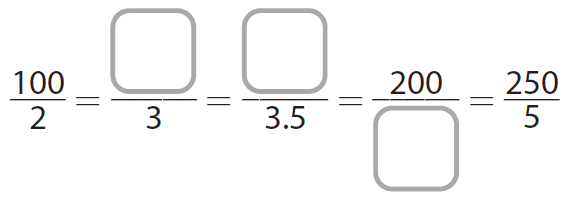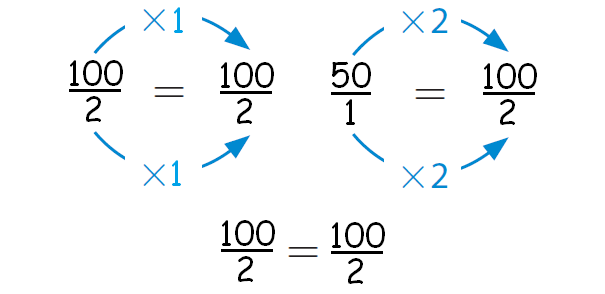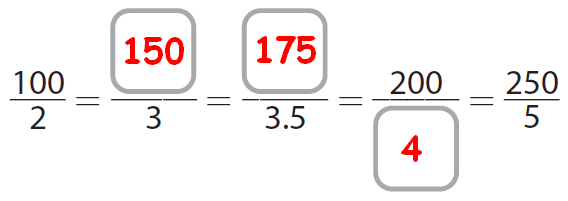FINDING RATIOS FROM TABLES WORKSHEET
Problem :
Students in Mr. Webster’s science classes are doing an experiment that requires 250 milliliters of distilled water for every 5 milliliters of ammonia. The table shows the amount of distilled water needed for various amounts of ammonia.

Questions 1 :
Use the numbers in the first column of the table to write a ratio of distilled water to ammonia.
Questions 2 :
How much distilled water is used for 1 milliliter of ammonia?
Questions 3 :
Use your answer from question 2, write another ratio of distilled water to ammonia.
Questions 4 :
Check whether the two ratios from answers of question 1 and question 2 are equivalent or not equivalent.
Questions 5 :
Complete the table. What are the equivalent ratios shown in the table ?


Solution :

Question 1 :
Use the numbers in the first column of the table to write a ratio of distilled water to ammonia.
Answer :
100 ml distilled water / 2 ml ammonia (or) 100 : 2
Question 2 :
How much distilled water is used for 1 milliliter of ammonia?
Answer :
From the first column of the table, the ratio of distilled water to ammonia is
100 ml water / 2 ml ammonia
To find the quantity of distilled water used for 1 milliliter of ammonia, we have to make the second quantity (ammonia) as 1.
100 ml distilled water : 2 ml ammonia = (100 ÷ 2) / (2 ÷ 2)
100 ml distilled water : 2 ml ammonia = 50 / 1
That is,
50 ml distilled water / 1 ml ammonia
The quantity of distilled water used for 1 milliliter of ammonia is 50 ml.
Question 3 :
Use your answer from question 2, write another ratio of distilled water to ammonia.
Answer :
To write another ratio from the answer of question 2, we have find an equivalent ratio to 50 : 1.
To find equivalent ratio of the given ratio, we have to multiply both the terms of the ratio by the same non zero number, say "2".
Then, we have
(50x2) : (1x2) = 100 : 2
Therefore, another ratio of distilled water to ammonia is 100 : 2
Question 4 :
Check whether the two ratios from answers of question 1 and question 2 are equivalent or not equivalent.
Answer :
The two ratios from the answers of question 1 and 2 are
100 : 2 and 50 : 1
Let us check, whether two rations 100 : 2 and 50 : 1 are equivalent or not equivalent.

From the above working, it is clear that the two ratios 100 : 2 and 50 : 1 are equivalent.
Question 5 :
Complete the table. What are the equivalent ratios shown in the table ?

Answer :
For the first blank :
(100 ÷ 2) / (2 ÷ 2) = 50 / 1
(50 x 3) / (1 x 3) = 150 / 3
For the second blank :
(100 ÷ 2) / (2 ÷ 2) = 50 / 1
(50 ÷ 2) / (1 ÷ 2) = 25 / 0.5
(25 x 7) / (0.5 x 7) = 175 / 3.5
For the third blank :
(100 x 2) / (2 x 2) = 200 / 4
Then, we have

Kindly mail your feedback to v4formath@gmail.com
We always appreciate your feedback.
©All rights reserved. onlinemath4all.com
Recent Articles
-
Trigonometry Quotient Identities
Apr 29, 24 08:51 AM
Trigonometry Quotient Identities -
Trigonometry Reciprocal Identities
Apr 28, 24 10:10 AM
Trigonometry Reciprocal Identities -
IB Diploma Mathematics Problems on Exponents
Apr 28, 24 05:42 AM
IB Diploma Mathematics - Problems on Exponents